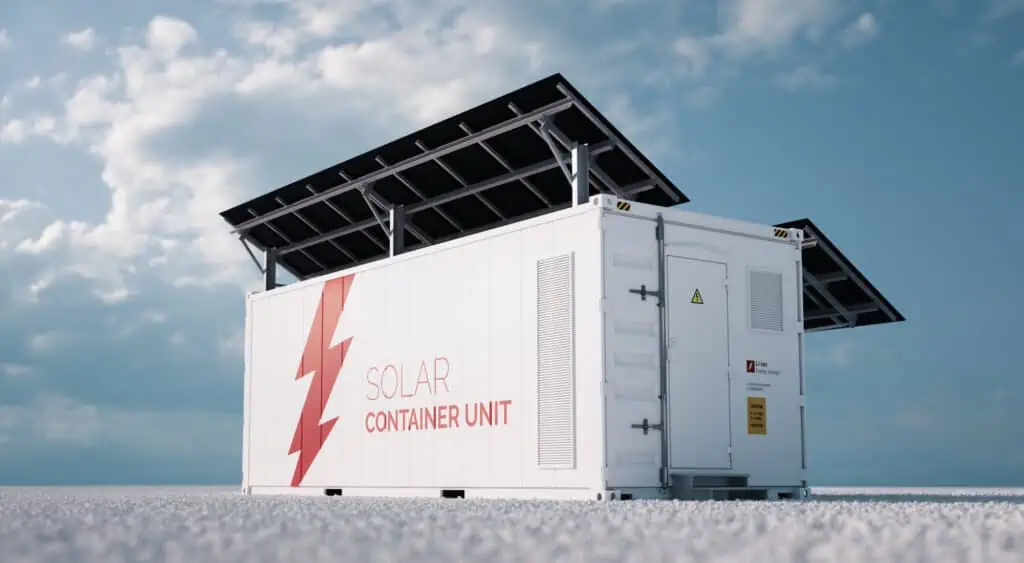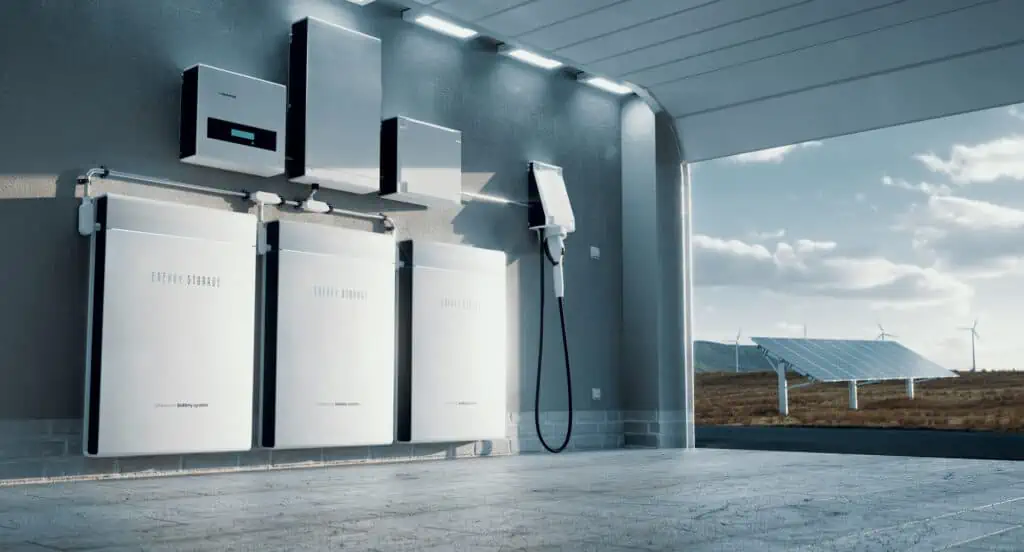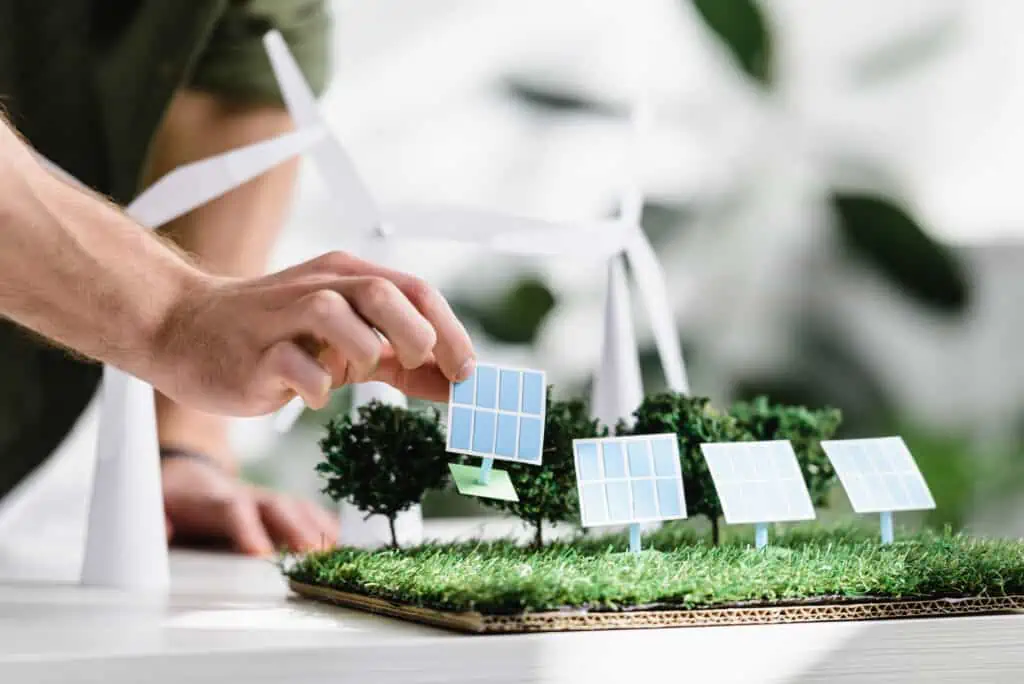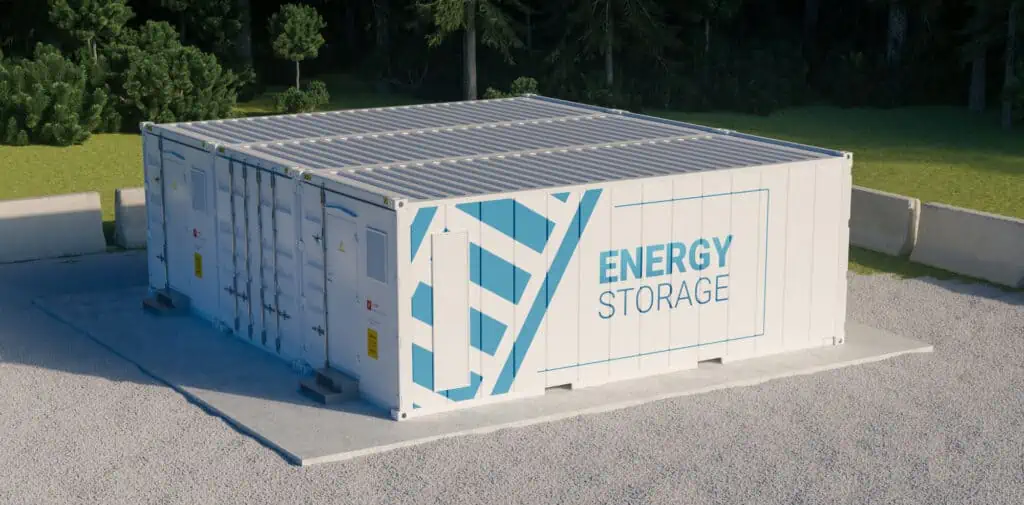Are you curious about solar energy storage? You may be considering switching to solar power, but you’re unsure how it works.
One of the biggest questions people have is whether solar power can be stored for later use.
The answer is yes! Solar power can be stored. In fact, energy storage is essential to a solar power system.
But how exactly does it work?
Let’s explore the benefits of storing solar power. We’ll also discuss the different types of solar energy storage systems and how they work.
Contents
The Importance of Storing Solar Power
Solar power has become increasingly popular in recent years. But one of the challenges of relying on solar energy is that it can only be generated during daylight hours.
This is where solar energy storage comes in. It allows homeowners and businesses to store excess solar energy for use when it’s needed.
Here are some of the key reasons why storing solar power is essential:
- Reduced reliance on the grid. Generating and storing energy alone makes you less dependent on your utility company. This can be especially valuable during power outages or high demand when the grid may be strained.
- Backup power. When the grid fails, you can continue to power your home and appliances with stored solar energy. This is particularly important for those living in areas prone to natural disasters.
- Energy savings. As mentioned above, solar energy storage makes you less dependent on traditional energy sources. This means you can maximize your cost savings on your monthly energy bills.
- Lower carbon emissions. Going solar means less energy needs to be generated by burning fossil fuels. As such, it reduces harmful greenhouse gas emissions. In turn, it also reduces your carbon footprint.
Is It Right for Your Home?
Before investing in solar energy storage, it’s essential to determine if it’s the right choice for your home.
- Evaluate your energy needs. Solar energy storage may be a good fit for you if you have high energy consumption or experience frequent power outages.
- Consider your location and climate. If you live in an area with a lot of sunshine, solar energy storage can be a great way to take advantage of that natural resource.
- Factor in the cost. While solar energy storage can save you money in the long run, it does require an upfront investment. You’ll need to weigh the cost of installation and equipment against the potential savings on your energy bills.
How Much Solar Power Can Be Stored?
The amount of solar power that can be stored depends on the solar system.
Several factors can affect how much solar power you can store. These include:
- System size
- Solar panel efficiency
- Amount of sunlight
But typically, it can store anywhere from 5 kWh to 20 kWh of energy. Depending on your storage system, it can last anywhere from a few hours to even days or weeks.
(Some highly advanced technologies even allow solar energy storage for up to 18 years!)
Types of Solar Power Storage Systems
There are several types of solar power storage systems you can choose from. Each of these comes with its pros and cons. So, make sure you consider them before making the investment.
Here are six types of solar power storage systems at a glance.
- Solar battery: Provides more energy independence
- Grid-tied: Allows net metering
- Thermal: Best for industrial applications
- Hydrogen fuel cell: Has high energy density
- Flywheel: More affordable and easier to operate
- Pumped Hydro: Stores energy for a longer time
Now, let’s look at each of them in more detail.
1. Battery Storage
Battery storage is the most common solar power storage system available today.
This option allows homeowners to store excess energy generated by their solar panels during the day. Then, they can use it at night or during periods of low sunlight.
Solar batteries offer homes and businesses a more reliable and independent energy source.
There are two main types of battery storage systems:
- Lead-acid batteries. These are the more traditional option and have been used for many years. This is because they are reliable and cost-effective. But they have a shorter lifespan than lithium-ion batteries. They also require more maintenance.
- Lithium-ion batteries. These are newer technology that has gained popularity in recent years. They are more efficient and have a longer lifespan than lead-acid batteries. They are also more eco-friendly and low maintenance. But these solar batteries are more expensive upfront.
2. Grid-Tied Storage
A grid-tied storage system is connected to the electrical grid. This means the system can draw from and supply energy to the grid.
These systems are becoming increasingly popular. This is because of their ability to help reduce energy costs and increase energy independence.
They also offer a reliable backup power source in case of a power outage.
One of their most significant benefits is allowing homeowners to take advantage of net metering.
Net metering is a program that allows homeowners to sell excess energy back to the grid. This can result in significant savings on their energy bills.
3. Thermal Energy Storage
Thermal storage uses heat to store energy.
This technology is beneficial for industrial applications that require high-temperature heat. These include power plants, manufacturing facilities, and food processing plants.
One of the most significant advantages of thermal energy storage is that it can provide a constant energy source even when the sun is not shining.
This makes it an ideal solution for industries that require uninterrupted power, such as hospitals and data centers.
Thermal energy storage systems also have a long lifespan and require little maintenance. This makes them a cost-effective choice for businesses seeking to reduce energy costs.
4. Hydrogen Fuel Cells
Hydrogen fuel cells are a lesser-known but highly efficient solar power storage system type.
A hydrogen fuel cell converts hydrogen gas into electricity, with water vapour and heat as the only byproducts. This makes it a clean and eco-friendly option for storing solar power.
One of the benefits of hydrogen fuel cells is their high energy density. This means they can store a lot of energy in a small space.
This makes them particularly useful for limited-space applications, such as in cars or boats.
Hydrogen fuel cells are also quiet and have no moving parts. This makes them low-maintenance and reliable.
5. Flywheels
A flywheel is a mechanical battery that stores energy through rotational motion.
The way it works is simple. When generating excess power, it is used to spin a heavy rotor at high speeds.
The rotor is enclosed in a vacuum-sealed chamber to minimize friction and air resistance. This allows it to spin for long periods without losing energy.
Then, when power is needed, the spinning rotor is connected to a generator. This then converts the rotational energy into electrical energy and sends it to the grid.
One of the main advantages of flywheels is their high efficiency. Due to chemical reactions and internal resistance, traditional batteries can lose energy. But flywheels can maintain their energy for days or weeks without any loss.
This makes them ideal for applications where energy storage is needed for short periods. These include smoothing out fluctuations in solar power output or providing backup power during grid outages.
Flywheels are also low-maintenance since they have no moving parts other than the rotor. This means they can have a lower total cost of ownership than traditional battery systems.
6. Pumped Hydro
Pumped Hydro is one of the most popular types of solar power storage systems.
This system stores solar energy by pumping water from a lower reservoir to a higher one when solar energy is abundant.
Then, it releases the water back to the lower reservoir through a turbine to generate electricity when energy is needed.
Pumped hydro storage systems are known for their efficiency, reliability, and long lifespan.
They can store large amounts of energy for weeks or even months. This makes them ideal for areas with intermittent or unreliable energy supply.
They can also balance the grid by providing energy during peak demand periods.
Applications of Stored Solar Power
One of the most exciting aspects of solar energy storage is its versatility in terms of applications. Stored solar power can be used in a variety of settings. These include:
- Residential: Solar panels can be installed on the roof of a home, and excess energy can be stored in solar batteries. This can help homeowners save money on their energy bills and reduce their reliance on the grid.
- Commercial: Office buildings or factories can also store excess electricity. This allows businesses to offset their energy costs and reduce their carbon footprint.
- Off-grid locations: Stored solar power can also be used in remote villages or disaster-stricken areas. This gives them access to electricity even when traditional power sources are unavailable.
The Challenges of Storing Solar Power
Solar power is a clean and renewable energy source. But it does present some challenges when it comes to storage.
Intermittency and Variability of Solar Power
Solar panels only generate power during daylight hours. They are also affected by weather conditions such as cloud cover.
As you may already know, cloudy days and nighttime hours significantly reduce the amount of solar power that can be generated and stored.
This makes it difficult to predict how much energy can be stored and used at any given time.
This also means energy storage systems must be able to handle fluctuations in supply and demand.
Now, there are many storage systems available.
But their effectiveness is limited by the capacity of the batteries. There’s also the issue of the efficiency of the energy conversion process.
Not to mention, the cost of these systems may be prohibitive for many households and businesses.
To overcome these challenges, researchers are exploring new technologies.
- Flow batteries. These use liquid electrolytes to store energy.
- Power-to-gas systems. These convert excess solar power into hydrogen gas for later use.
- Combination of renewable energy sources. This approach helps create a more stable and reliable energy storage system.
Environmental Concerns
Solar power is a clean and renewable source of energy. But the materials used in storage systems can have negative environmental consequences.
For example, lithium-ion batteries require the extraction and processing of lithium. This can have significant environmental impacts.
Disposing these batteries at the end of their life cycle can also be problematic.
Another concern is the energy required to produce and transport the storage systems.
The manufacturing process for these systems can be energy-intensive. Transporting them to their final destination can also contribute to greenhouse gas emissions.
To address these environmental concerns, it’s essential to:
- Consider the entire life cycle of solar power storage systems.
- Prioritize the use of materials and processes that have a minimal environmental impact.
- Recycle or repurpose storage systems instead of just disposing of them.
Technological Limitations
Solar panels have become more efficient and affordable. But the same cannot be said for energy storage technology.
Currently, the most common form of energy storage is using batteries.
But batteries have limited storage capacity. They can also degrade over time, reducing their effectiveness.
Other forms of energy storage, such as pumped hydro storage and compressed air energy storage, have their limitations. They are also not suitable for all locations or situations.
To address these technological limitations, there is a need for continued research and development in energy storage technology. This includes:
- Finding ways to improve the efficiency and lifespan of batteries
- Exploring new forms of energy storage
- Developing better ways to integrate renewable energy sources into existing power grids
Only through these advancements can we overcome the challenges of storing solar power and fully realize the potential of renewable energy.
The Future of Solar Energy Storage
Solar energy storage is becoming increasingly important as we shift towards a more sustainable future.
Luckily, the future of solar energy storage looks promising.
As these technologies continue to improve and become more affordable, we expect to see more widespread adoption of solar power.
This will benefit the environment and provide a reliable energy source for generations to come.
So, let’s harness the sun’s power and store it for a better tomorrow!
For more information on solar energy, check out our other articles. We talk about everything solar to help you better understand how it works and how it can help us build a greener future.
If you have any questions, feel free to contact us! We will get back to you shortly and ensure you have a smooth transition to solar power for your home.




